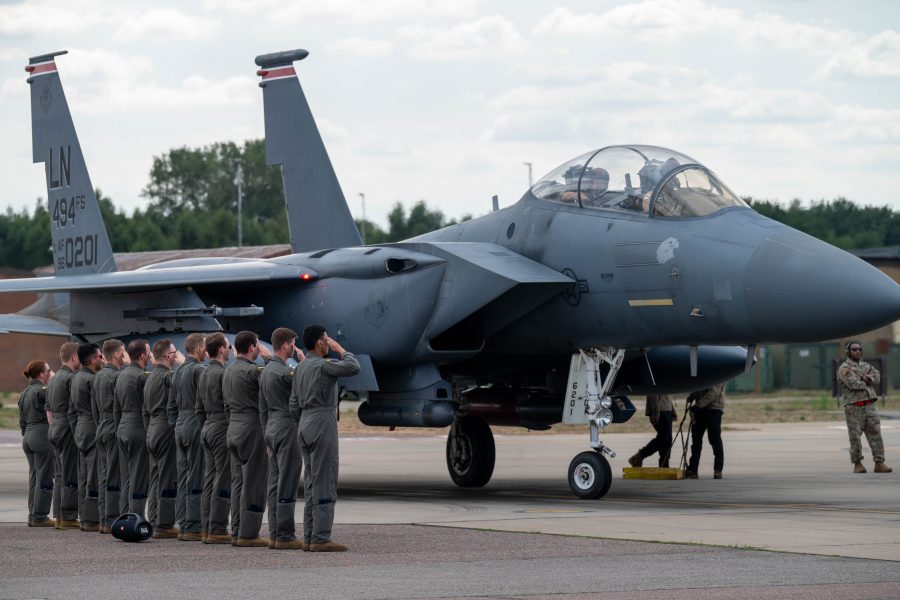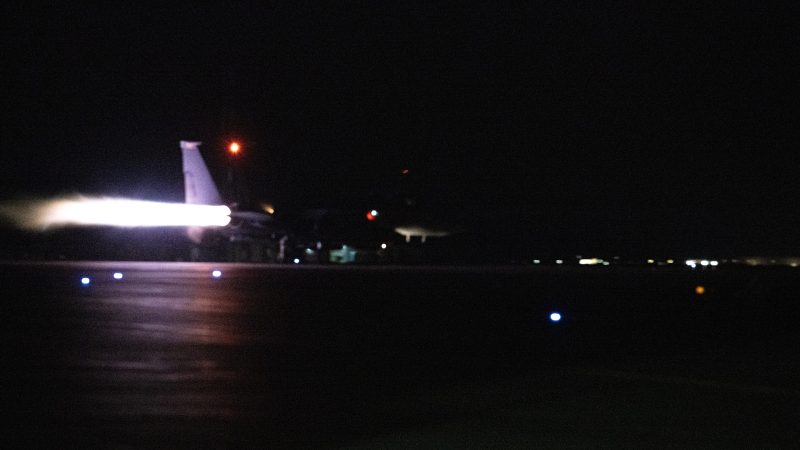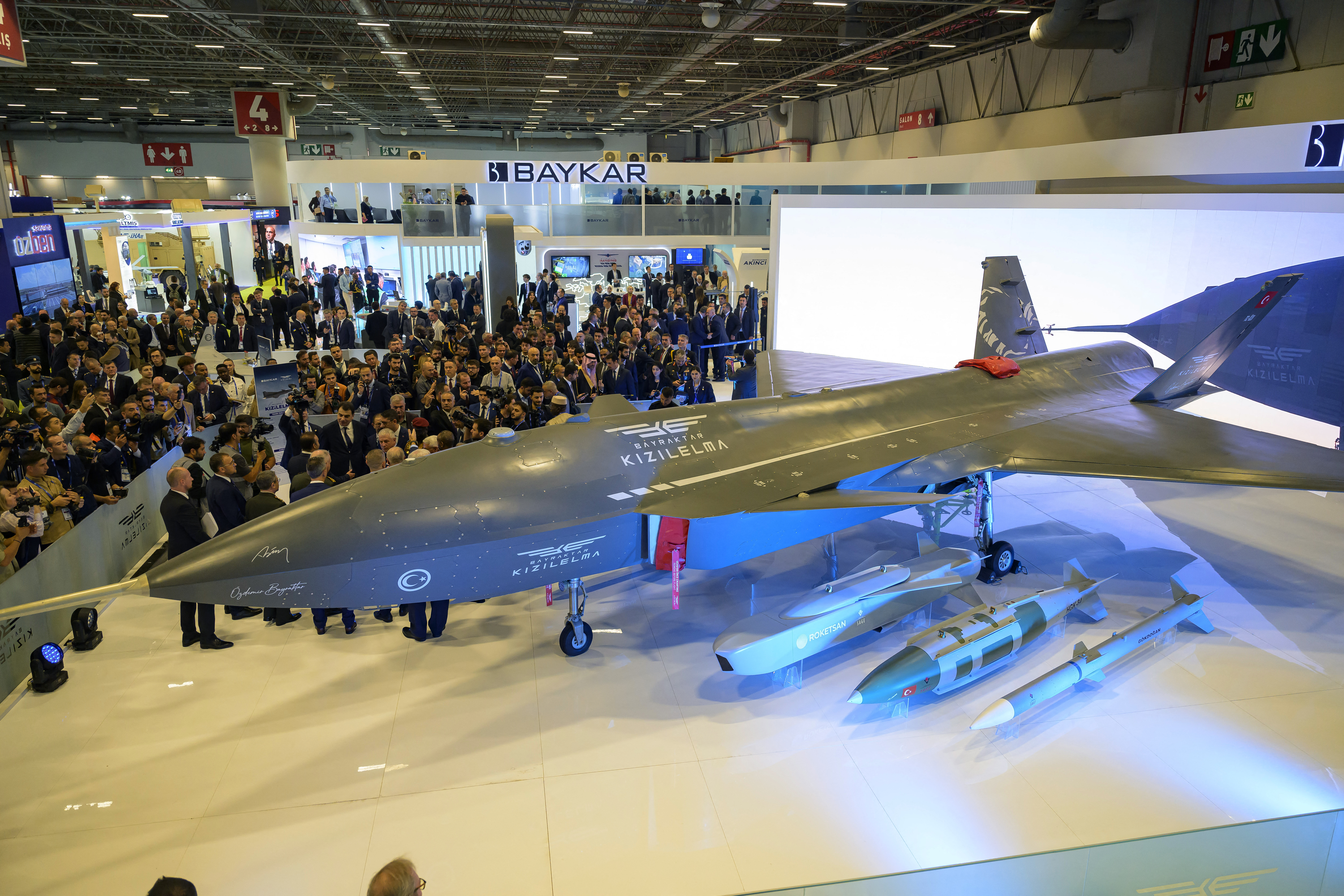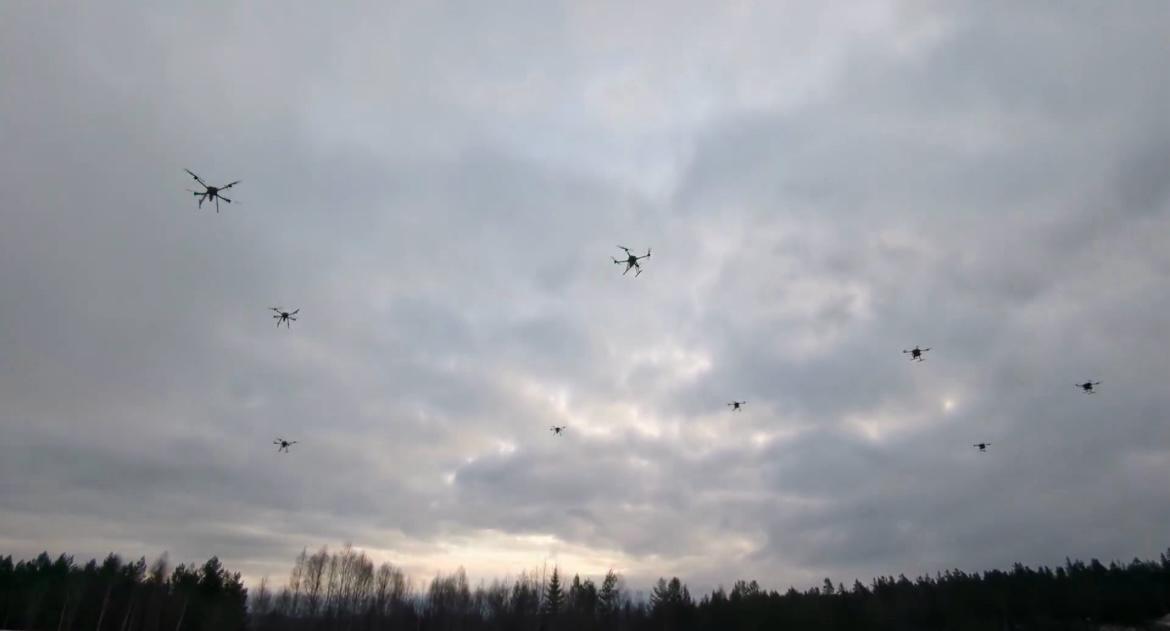
NATIONAL HARBOR, Md.—When U.S. Air Force F-15E Strike Eagles headed out to blunt Iran’s attack on Israel last year, they tried an unusual tactic: Knock Iranian drones out of the sky with laser-guided bombs.
Iran launched around 300 drones and missiles at Israel on the night of April 13, 2024 and the F-15Es fired dozens of AIM-9 Sidewinders and AIM-120 AMRAAM with great effect. But the Iranian barrage included so many aimpoints that many of the fighters quickly exhausted their air-to-air missiles—a significant expenditure considering that Strike Eagles can carry up to eight AIM-9 Sidewinders and AIM-120 AMRAAMs.
Out of missiles and still seeing targets, the aircrews tried a new tactic, Airmen involved in the operation revealed in an interview at AFA’s Air, Space & Cyber Conference. F-15Es from the 494th Fighter Squadron and the 335th Fighter Squadron were carrying Laser-guided Joint Direct Attack Munition bombs just in case the jets needed to strike a ground target.
Lt. Col. Timothy “Diesel” Causey, a weapons systems officer, explained the decision to employ bombs. “So we end up in the middle of the desert,” said Causey, now commander of the 494th Fighter Squadron. “We find another drone, and the boss just goes, ‘Diesel, what do you think?’ I was like, ‘Let’s drop a bomb.’ He was like, ‘Oh, hell yeah, brother.”
In employing the new tactic, the Airmen were taking advantage of latitude given them by then-Air Forces Central commander Lt. Gen. Alexus G. Grynkewich—now the four-star NATO Supreme Allied Commander.
“Gen. Grynkewich gave us the intent: What did we need to do for success? He had passed down the trust in us to operate,” said Maj. Benjamin “Irish” Coffey, who on April 13 was the mission commander for the operation as a weapons systems officer with the 494th. He’s now on the 48th Fighter Wing staff.
The JDAM dropped by Causey and his front-seater, then-squadron commander, Lt. Col. Curtis “Voodoo” Culver, missed. But there was reason to think the tactic could work: An F-15E once scored an air-to-air kill on an Iraqi Mi-24 Hind helicopter as it took off during Operation Desert Storm in 1991. At the start of the deployment, the squadron considered the concept.
“As we start this process in December [2023] and January [2024], we’re shooting missiles,” Causey said. “Sooner or later, somebody might find themselves in a situation where they’ve shot everything, and then what do I want them to do?”
The question weighed on Causey, the squadron’s operations director, and Coffey, its weapons officer.
“It was really important that our young guys aren’t out in a situation that somebody hasn’t thought about and assessed the risk for them,” Causey said. “And so we had a conversation about, like, ‘Can we drop a bomb and laze it in?”
Causey said he had dropped JDAMs on moving ground targets, so he applied similar logic. “This thing, these drones, it’s near the ground, it’s low altitude, but it’s not on the ground,” he said. “It’s moving a little bit faster than the vehicles we usually train against, but it’s not moving that much faster.”
From his rear seat in the Strike Eagle, Causey lit up the drone with his targeting pod. “We just set it up, just like we would in attacking a car, and we made a few key changes to the actual procedure,” Causey said.
Seeing a large explosion, it looked for a moment like success. “So we’ve swooped in, we’ve dropped a bomb, and then now we’re lazing,” Causey said. “I mean, the bomb, it looks like it hits—big explosion. I was like, “HIT!” And then just out of this massive cloud, like in Star Wars,” he added, making noise of a projectile zipping by. “Just here comes the drone, just right out of the cloud. And I was like, ‘Oh, miss.’”
Coffey chimed in on the radio: “We’re not doing that again.”
Two other crews also tried to employ a JDAM against a drone that night. “They missed further than I did—mine was the closest,” Causey quipped. “But it was worth trying, right? Because in this case, like that JDAM, they’re way less expensive than the other weapons we’re using. We have it onboard. We’ve thought about this procedure. No civilians in the area. We have the ability to try this.”
Coffey called an end to the test. “I ended up coordinating through command and control to stop doing it entirely, because my comfort with the level of risk acceptance for a miss now transcends outside of the tactical,” said Coffey. “There’s strategic implications if something happens because of a missed bomb, so we end up just knocking it off until we can verify some ways to improve it.”
Other tactics were also considered and rejected, including buzzing the drones at low altitude or relying on the F-15Es’ internal gun in anything other than exceptional circumstances.
Ultimately, the Airmen enjoyed considerable success against the Iranian weapons. All told, U.S. and allied aircraft downed some 80 drones before they reached Israel, which was important because Washington’s efforts to try to contain fighting between Iran and Israel depended on how well U.S. forces could stymie the Iranian attack. Airmen were awarded numerous medals for their actions that night.

“This 494th Fighter Squadron and the 494th Fighter Generation Squadron are working together with other units at our base to make things happen,” Causey said.
In fact, F-15Es from the 494th Fighter Squadron launched under “Alarm Red” conditions—meaning an air attack was underway and personnel should seek shelter, and there was no one in the air traffic control tower. The Air Force declined to disclose where the F-15E units were based in the region.
“The last two jets that hadn’t been launched that day are now prepped,” Causey said. “They’re basically almost at the point where they’re going to take off when they want Alarm Red hits and stuff starts blowing up. … The squadron commander, Lt. Col Culver, gets on the radio on our squadron frequency, and basically, he’s just like, ‘You will launch to survive, and you will defend this base. All aircraft in the green take off now!’ And those dudes take off, get to the end of the runway. People run out of the bunkers, maintenance comes out of the bunkers, arms the jet up, runs back to the bunkers, and then those guys take off.”
Strike Eagles from the 335th Fighter Squadron landed later under the same conditions, sequencing themselves for the landing.
“Fighter pilots want to get things done,” Causey said.
The post How F-15s Tried to Take Down Iranian Drones with Laser-Guided Bombs appeared first on Air & Space Forces Magazine.

AFA National, Air, Gen. Alexus G. Grynkewich
Air & Space Forces Magazine
[crypto-donation-box type=”tabular” show-coin=”all”]












